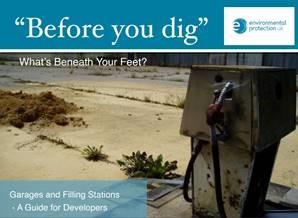New Adult Mental Health Support in SE London
SE London NHS CCG commission new mental health support service for adults in south east London
- NHS South East London CCG has commissioned Qwell, the UK’s leading provider of digital mental health support.
- Qwell, delivered by Kooth, is accessible for anyone over 26 in the area, with no referrals, waiting lists or thresholds to meet.
- Kooth has seen an increased demand for mental health support from adults across the UK due to Covid-19.
NHS South East London Clinical Commissioning Group has commissioned Qwell, a free anonymous online counselling and emotional wellbeing service for adults from digital mental health pioneers Kooth.
Qwell is accredited by the British Association for Counselling and Psychotherapy (BACP) and offers early preventative care and support without any prior thresholds to meet.
Read more and find out how to access support here
The London Plan
On the 29 January 2021 the Secretary of State wrote to the Mayor confirming that he is content for the Mayor’s new London Plan to be formally published, with no further changes.
The Mayor will now progress to formally publish the new London Plan. This will take a few weeks, in order to allow for statutory notifications to be issued alongside other administrative tasks.
Fulham Lodge
We have been involved in this project from the start, and first visited site on 16 January 2017 to undertake a site walkover for our phase 1 desktop study. Subsequently we undertook an intrusive investigation and produced a remediation strategy to deal with the contamination identified.
We returned recently to undertake verification sampling in the gardens of the completed project. It is a truly splendid building, more details can be found on Simon Gill Architects website. If you want to see the interior and follow the development you can watch the Grand Designs episode of More 4



Plan to regenerate England’s cities with new homes
New measures to recover from the pandemic and help provide much-needed new homes have been set out recently by Housing Secretary Robert Jenrick.
Under the proposals, cities will be encouraged to plan for more family homes – which are the right size and type for families to live in – and to make the most of vacant buildings and underused land to protect green spaces.
Using brownfield sites clearly makes sense on many levels but does it stack up financially. We cannot provide cost advice but what we do know is that contamination and remediation can have a dramatic impact on costs. Contamination is not a separate issue to be considered later, cost effective remediation could impact site levels, drainage strategy and site layout. Getting early advice is crucial if remediation costs are to be minimised.

Permitted development rights – England
A developer is now able to give planning authorities “Prior Notification” of certain changes of use rather than applying for full planning permission. These changes of use include:
Change of use of a building from business to residential
Change of use of a building to a school
Change of use from an agricultural building to another use
The process requires a developer to make an application to the local planning authority for a determination as to whether prior approval will be required as to the transport and highway impacts, flooding risk and contamination risk. This application must be made before beginning a development and the application should consist of the developer’s
details and a plan showing the proposed development. Further information is only required if the local planning authority consider it necessary to assess the transport impact, flood or contamination risk. If there is no risk identified, prior approval is not required and the development can take place without further permission from the local planning authority.
We have considerable experience of preparing contaminated land desktop reports and flood risk assessments for these types of projects. If you would like some advice on a project call me, Peter George on 07765 232995.
EPUK Release a Guide to Redeveloping Petrol Filling Stations
This timely document is entitled Before You Dig, Garages & Petrol Stations, Guidance for Developers, EPUK. David Rudland et al.
EPUK say “This guide has been produced now because we anticipate alternative fuels will make many of the 8500 retail forecourts in the UK surplus over the next 5-10 years or so. Repurposing this kind of brownfield site presents particular challenges of the sort that drive some developers to seek greenfield sites instead.
The guide describes how petrol stations were constructed, operated, and decommissioned, outlining particular issues around decontamination and signposting towards further guidance. Tips for good practice and case studies appear throughout.“

Government considers Nature Volunteer Force to tackle invasive species
Establishing a Nature Volunteer Force (Citizens’ Army) to monitor invasive species is one of a number of recommendations the Government is exploring following the report by the Environmental Audit Committee on Invasive Species.
Last year, the Committee published its report on invasive species, finding that they cost the UK economy £1.8 billion a year through damage done to natural biodiversity, disease transmission and other harmful environmental effects. It was clear that urgent action is needed to slow the rate of arrival of invasive species, and concerns were raised it is not being given the same priority and funding as animal and plant health.
The Department for Environment, Food and Rural Affairs (DEFRA) has recognised the need for greater resources to tackle the issue in its response.
Establishing a Nature Volunteer Force to track invasive species was one of the main recommendations of the Committee, and the Government has confirmed it will monitor a similar approach underway in New Zealand. It has estimated the cost to support Local Action Groups in the UK could be around £340,000.
The Government has also accepted the Committee’s recommendations to explore creating a separate inspectorate and to boost public awareness by updating the Be Plant Wise campaign. It suggested public goods payments under the Agriculture Bill could contribute to efforts to counter established invasive species.
Environmental Audit Committee Chairman, Philip Dunne, said:
“The UK is spending an enormous £1.8 billion a year responding to the impact of invasive species, and more preventative action must be taken to protect our environment and the economy.
“From a Nature Volunteer Force to track invasive species, to introducing an inspectorate and boosting awareness amongst the general public – these are all steps recommended by the Committee that could make a significant difference, and it is promising the Government is considering them.
“We will continue to monitor progress of the Government in this area to ensure the necessary steps are taken to protect our crops, forests and wider biodiversity from harmful invasive species.”
Further recommendations by the Committee and the Government response is as follows:
- The EAC called for funding to be increased to £3million a year to support the secretariat. The Government has recognised “the need for significantly greater resources” and said this will be considered as part of departmental business planning and future government spending reviews, including Spending Review 2020.
- Since 2014 the EAC has called for the Government to ratify the Ballast Water Management Convention, which aims to limit the arrival of invasive species from the shipping industry. The Government has said it expects to ascend by summer 2020. The Committee will monitor that this has taken place.
- The Committee had highlighted the lack of trade restrictions on plants which carry Xylella and Oak Processionary Moth which have allowed outbreaks to occur. New trade controls were announced on 21 April to safeguard the UK from a range of plant health diseases and pests including Xylella fastidiosa and the emerald ash borer beetle which can kill ash trees.
- The Committee urged publication of Pathway action plans to identify steps to slow the arrival of invasive species. The Government has stated that four of its pathway action plans are now complete (zoos, aquaria, hull fouling and angling), and a further six will be completed by the end of 2022.
- Guidance on tree planting and mandate a biosecurity assurance scheme. The Government has said that as part of its plans for future farming it is conducting research into the supply of high quality, diverse, stocking material in the UK for tree planting. It is also exploring options for introducing biosecurity-based procurement criteria for the supply of plants and trees under government contracts and grants as recommended by the Committee.
- Leaving the EU. The Government confirmed that under retained EU law, there will be an obligation on the Secretary of State to undertake a comprehensive review of the list of species of special concern before 2 August 2022.
- The Committee raised concern that large-scale eradication projects in the Overseas Territories rarely receive enough funding. The Government has said the uplift in funding for the Darwin Plus Programme (2021-2022) to £10 million per annum underlines its commitment to protect the Overseas Territories’ unique environments, including through funding projects to tackle the threat posed by invasive non-native species.
Business Continuity Update in Relation to Covid 19 – 26/5/20
In light of the unprecedented situation we have implemented a number of measures to protect the health and well-being of our employees, our clients and all those with whom we work. We remain committed to maintaining the highest possible level of service to our clients. We are constantly updating our procedures to ensure we are following best practice and have implemented the following:
Remote Working
Currently we are operating as near a normal service as possible. Some of our work can be done by our staff operating remotely from home and we are set up so that all our staff can access all our systems and project information while working from home. We have prepared protocols for work in the office ad
Site Visits
For almost every project it is necessary for us to visit the site in question, either for a walkover or for sampling. Every activity requiring our staff to leave their home is risk assessed. For us risk assessments are a part of daily life, the key change is that this now includes the risks of travel to and from site as well as those on site. We will continue to make site visits where it is possible to do so safely.
Meetings
Our team will not be attending face to face meetings at present. We have the facilities to meet with our clients and contacts via video-link or via conference call.
Continuity
We will make every effort to continue to provide a normal service so please if in doubt contact us and we will advise if we are able to safely undertake your project.
Further Information
The Construction Leadership Council has published guides and videos to provide construction specific guidance on achieving compliance with Covid 19 best practice.
Judicial Review Appeal with Potentially Far Reaching Implications for Contaminated Land Rejected
In summary we can breath a sigh of relief and carry on as before with a system that allows contaminated land to be dealt with by planning conditions.
An appeal for judicial review was made against a Derbyshire council’s consent for a 200-home development less than 100m from a former landfill. The points of appeal in a layman’s summary were a contention that the contaminated land issues had not been adequately addressed. The appeal was rejected after concluding that there was no obligation for any potential contamination of the application site to be assessed and removed before approval was granted.
Building Partnerships
Another successful on-line networking event by the Building Partnerships team. I enjoyed talking with old friends and making new ones.
